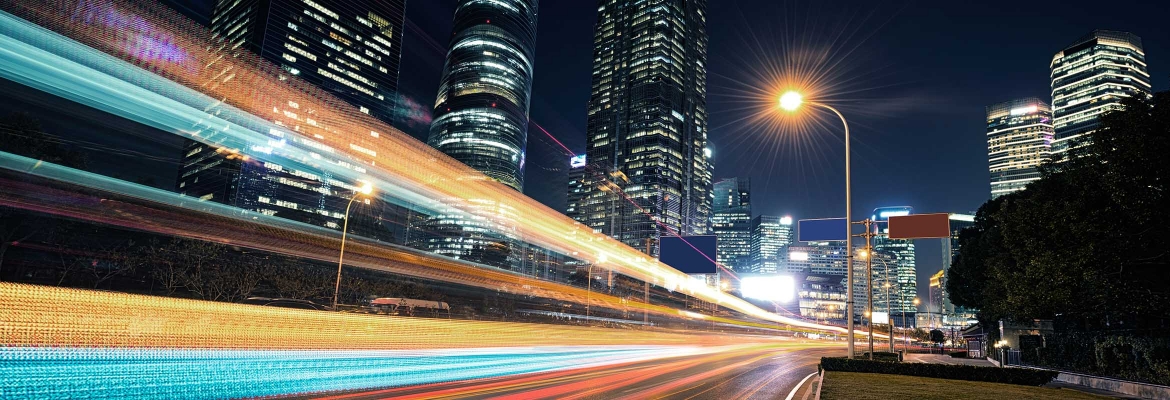Can light influence our behaviour?
March 2019
March 2019
One of the biggest issues impacting our growing and crowded cities is how we keep people safe as they travel from A to B. As our cities continue to grow, congestion on our roads, pavements and transport hubs will only continue to worsen.
Signs and signage can of course help: but the problem with signage is that we are often slow to find and then process the information they give us. Especially if we are in a new or unfamiliar environment, excessive signage can result in cognitive overload, which actually slows us – and the crowd around us – down.
Could light, and especially lighting enabled with ‘Smart’ or ‘Internet of Things’ (IoT) functionality, be one answer?
To find out, exterior lighting manufacturer DW Windsor and IoT specialist (and sister company) Urban Control have partnered in a large public sector (Innovate UK) funded project to better understand how light can influence people’s behaviour in crowded situations. Teaming up with the University of Nottingham and the Railway Safety Standards Board.
IoT, of course, is already a key element within, and attraction of, Smart Cities. One of the common features of Smart Cities around the world has been their adoption of connected and IoT-enabled street lighting, which has the ability to provide services such as car parking sensors and pedestrian counting on high streets.

We know light can influence our mood and even our ability to perform certain tasks, but what our new project is addressing is how light can also be used to provide wayfinding information and to influence the speed people move in busy public areas.
If we can use lighting to reduce congestion and crowding, we can improve the experience of users. This, in turn, could help to increase the capacity of existing infrastructure – roads, pavements or public buildings – therefore making it a financially attractive option. Although going beyond what is often meant when we use the term ‘Smart City’, this would very much be a ‘Smart’ solution for many cities, and one with measurable, tangible benefits.
The advantage of using light rather than signage to address congestion and crowding is that we have a much quicker, intuitive response to light. For example, people have a strong preference for well illuminated entrances and exits, while pulsing lighting could provide information on direction and speed of movement.
One of the challenges here is that understanding how light influences behaviour is a hugely complex area. There is a vast amount of research on the effects of light and lighting upon behaviour, and it is well-recognised that people often have a very individual physiological and cultural response to light, but the fact there are so many variables means studies have sometimes had contradictory results or been inconclusive.
Nevertheless, research does suggest a number of key parameters of light that can influence behaviour. These include:
Light intensity
Colour
Frequency of pulsing or flashing
Direction of light
All of these can nowadays be varied and adjusted with LED technology. We have the means to remotely control lighting using cloud-based Central Management Systems which, in turn, can allow us easily to change light parameters in each connected fitting. We also have effective and affordable smart sensors that can be used to record the response of people to different lighting parameters at different moments of the day, in a real-world situation.
We can therefore collect large volumes of sensor data, managed through a secure data platform, which we can analyse to understand the effectiveness of different lighting interventions. Ultimately the application of artificial intelligence will provide new algorithms that can be integrated to existing systems.
If we can combine new, adaptable LED lighting that has greater functionality with modern IoT technology and analytics, we believe we will be better able to understand how the behaviour of individuals and crowds is influenced by different lighting parameters.
In turn, our aim is to create a network of connected lighting products that can dynamically respond to congestion and crowding levels and therefore help to keep our cities moving.
We are just at the start of our journey: enhancing the functionality of existing products so that we can test these at a trial site. Our academic partners will be undertaking a rigorous assessment of the effectiveness of the technology and the benefits that arise, but it is a journey we believe has the potential to bring a real and positive impact to the development of our towns and cities.
As the results start to come through we will share our findings in the hope that we can encourage the lighting industry as a whole to champion the power of light as more than just an urban asset but also as an influencer of urban behaviour.
Article originally published in the Lighting Journal: March-2019
Offering extensive industry experience, over 30 years’, Alan was heavily involved in the evolution of lamp to LED technology at DW Windsor. A published writer, within various trade publications, Alan has a unique ability to translate technical complexities, such as the effects of colour temperature and quality on human physiology. He has a keen interest in the application of technology to improve user experiences and in the innovative application of light to help reduce accidents and fatalities.